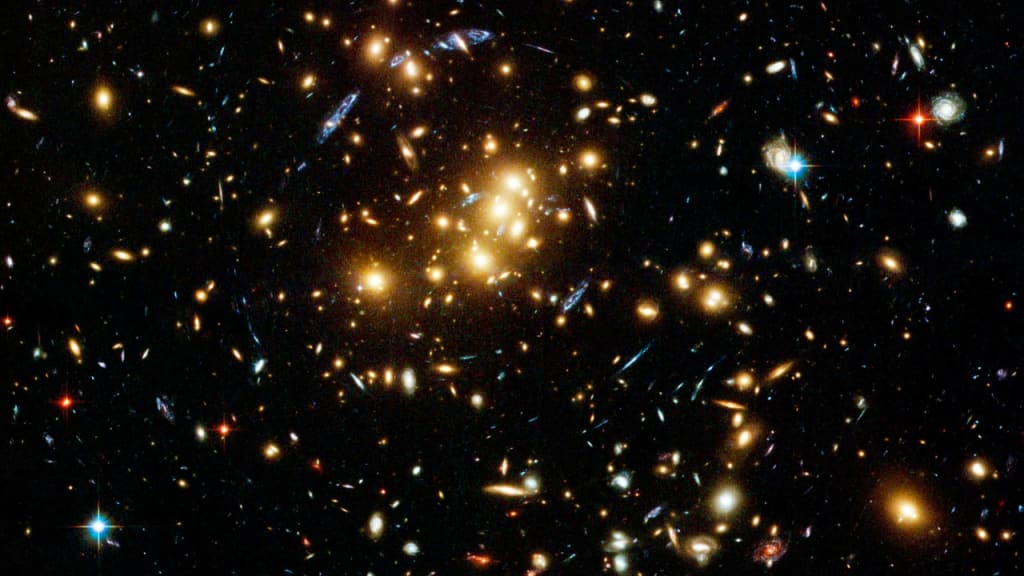Exploring the Mysteries of Dark matter: What we know So Far
Guide to Explore Mysteries of Dark Matter,

Dark matter is mysterious and elusive substance that makes up about 85% of the matter in the universe. Despite being invisible and difficult to detect, scientists have been studying the dark matter for decades in attempt to understand its properties and the role it plays in the cosmos.
So, what is dark matter? In simple terms, dark matter is a form of matter that does not interact with light or any other form of electromagnetic radiation. It doesn't emit, absorb, or reflect light, which is why it's invisible to telescopes and other astronomical instruments. The only way we can detect its presence is through its gravitational effects on other matter.
One of the earliest pieces of evidence for dark matter came from the work of Swiss astronomer Fritz Zwicky in the 1930s. Zwicky was studying the motion of galaxies in the Coma Cluster and found that the cluster contained far more mass than could be accounted for by the visible stars and gas. He proposed that there must be some invisible, dark matter holding the cluster together gravitationally.
Since then, scientists have continued to study the behavior of galaxies and other celestial objects in attempt to learn more about dark matter. One approach is to study the way light bends as it passes through large clusters of galaxies. This phenomenon, known as gravitational lensing, can reveal the distribution of mass in the cluster, including any dark matter that may be present.
Another approach is to study the rotation curves of galaxies. The rotation curve describes how the velocity of stars in galaxy changes as a function of their distance from the center. According to the laws of gravity, the velocity of stars should decrease with distance from the center, but observations show that the velocity remains constant, indicating the presence of invisible mass in the galaxy's outer regions, likely in the form of dark matter.
There have also been attempts to directly detect dark matter particles using experiments on Earth. These experiments typically involve trying to detect the weak interactions that dark matter particles may have with ordinary matter. So far, none of these experiments have been successful in detecting dark matter, but they have placed limits on the properties of dark matter particles, ruling out some possible candidates.
Despite the progress made in studying dark matter, many mysteries remain. One of the biggest mysteries is the nature of dark matter itself. What is it made of? Scientists have proposed various candidates, including weakly interacting massive particles (WIMPs), axions, and sterile neutrinos, but none of these candidates have been confirmed.
Another mystery is why dark matter seems to be distributed in "halo" around galaxies, rather than being concentrated in the galactic disk. This distribution suggests that dark matter interacts differently with gravity than ordinary matter does, but the exact nature of this interaction is still unknown.
The role that dark matter plays in the evolution of the universe is another mystery. It's clear that dark matter played crucial role in the formation of the first galaxies and other large structures in the universe, but the details of this process are still being studied.
Despite the many mysteries surrounding dark matter, there is no doubt that it plays critical role in the cosmos. Without dark matter, galaxies would not have formed and the universe as we know it today would be vastly different. As scientists continue to study dark matter, they hope to gain a better understanding of its properties and its role in the universe.
In conclusion, dark matter is fascinating and elusive substance that has captured the imagination of scientists and the public alike. While much progress has been made in studying dark matter, many mysteries remain, and scientists continue to explore the nature of this mysterious substance. With new telescopes and experiments on the horizon, we can expect that our understanding of the dark matter will continue to grow in the years to come.
About the Creator
MD
I am a poet and writer, entwined in passionate embrace with souls of poets, penning love letters to their words.
If you love my poets give a like, leave comments and share them with love. Don't forget to subscribe to my profile.
Thank you!
Enjoyed the story? Support the Creator.
Subscribe for free to receive all their stories in your feed. You could also pledge your support or give them a one-off tip, letting them know you appreciate their work.






Comments
There are no comments for this story
Be the first to respond and start the conversation.